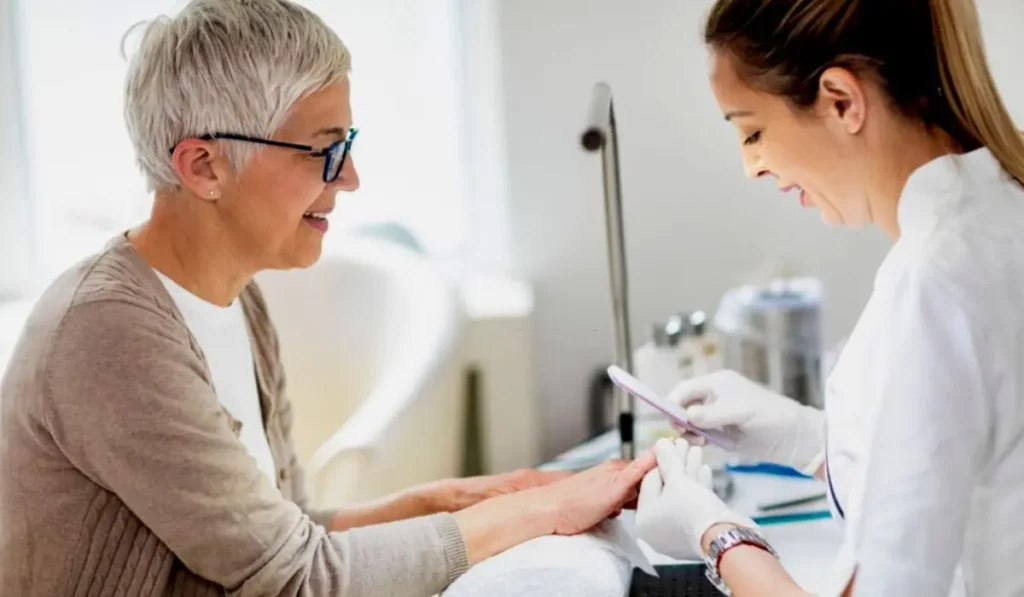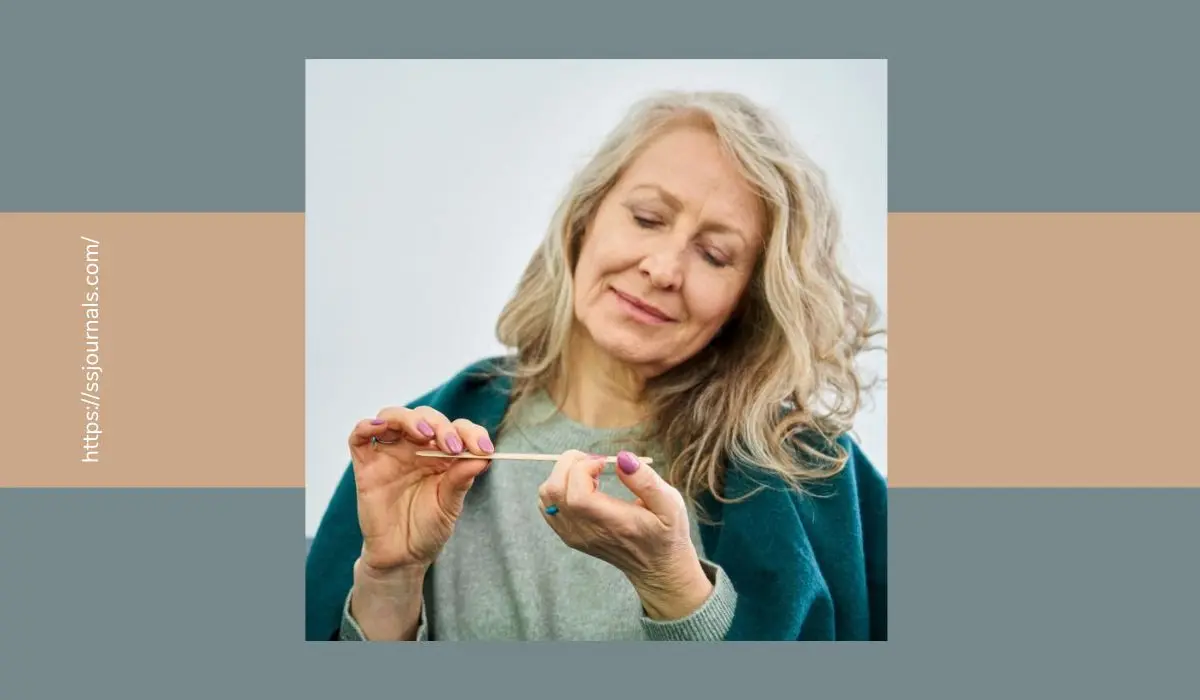Elderly people must keep their nails clean and healthy. This can help to stop various nail problems. Regular nail care is necessary to reduce the chance of infection and support their general health.
When it comes to elderly nail care, there are a few things to remember. Firstly, cut nails regularly with the right clippers. Cut straight across and keep away from ingrown nails.
Also, it’s essential to keep the nails clean. Wash hands often, focusing on under the nails. This gets rid of dirt, bacteria, and germs which can cause infections.
Elderly people should also moisturize their nails and cuticles. Dryness can make nails weak and prone to breaking. Use a moisturizing cream or oil every day to keep the nails moist and strong.
Importance Of Nail Cleanliness For The Elderly
Nail cleanliness is essential for seniors. Neglecting it can cause health issues like infections and discomfort. Keeping nails clean prevents bacteria build-up and lowers infection risk.
Proper hygiene stops dirt, debris, and bacteria from entering nails and surrounding areas. As we age, our immune system weakens, so cleanliness is very important.
Clean nails also look nice and give seniors confidence. Trimming and cutting them correctly stops problems like ingrown nails. Filing the edges smooths out any sharp edges that can hurt.

If seniors have trouble cleaning their nails, they should seek professional help. Caregivers or manicurists can provide safe and correct nail care.
The elderly should make nail cleanliness a priority. It’s a must-do for better health and a confident appearance. Don’t miss out – start today!
Step-By-Step Guide For Cleaning And Caring For Elderly Nails
Elderly nail care is important for maintaining cleanliness and health. Here is a step-by-step guide to assist with cleaning and caring for elderly nails:
🔶 Trim nails carefully to prevent ingrown nails and discomfort. Use proper nail clippers or a nail file to achieve the desired nail length.
🔶 Soak the nails in warm water for a few minutes to soften them, making it easier to clean and remove any dirt or debris.
🔶 Gently clean the nails and cuticles using a soft brush or a cotton swab dipped in a mild soap or a gentle cleanser. Be sure to clean under the nails as well.
🔶 Examine the nails for any signs of infection, discoloration, or abnormalities. If anything unusual is observed, it is advisable to consult a healthcare professional.
🔶 Apply a moisturizer or cuticle oil to keep the nails and surrounding skin hydrated. This helps prevent dryness, cracking, and splitting.
🔶 Avoid using harsh nail products, such as acrylic nails or strong nail polishes, as these can weaken the nails and make them more prone to damage.
👉 Preparing The Materials
To look after elderly nails properly, materials must be ready. Preparing these supplies in advance can give your loved ones a pleasant and efficient experience. Here’s a step-by-step guide:
🔶 Collect the necessities: Get all the tools for nail care, like nail clippers, files, pushers, buffer blocks, and cotton balls. Having them nearby will save time and stop any interruptions.
🔶 Keep it clean: Sterilize the tools before beginning the session. Clean them with warm water plus soap or an alcohol solution to remove bacteria and germs. This is important for hygiene and avoiding infection.
🔶 Set up a comfy spot: Find a clean and bright area where they can sit down comfortably. Put a towel or mat under their hands to catch clippings and filings, making cleaning easier.
🔶 Follow preferences: Choose materials according to their preferences. For instance, curved nail clippers may be more comfortable. Customizing selection will make their experience better.
🔶 Safety first: Safety is key when getting materials for elderly nail care. Check that all tools are in good condition with no loose blades or sharp edges. Also, be aware of any medical conditions that require extra caution.
These steps will make nail care effective and safe, avoiding distress. Each person has particular needs; use these steps accordingly. It’s worth noting that the Dermatology Nurses’ Association says proper nail care can benefit overall health and well-being among the elderly.
👉 Trimming The Nails
Clean, disinfected clippers or scissors specifically designed for nails? Yes, please! Before trimming, soak the nails in warm water for a few minutes to soften them.
Gently hold the foot or hand and carefully trim straight across. Don’t cut them too short – ouch! To finish, use an emery board to smooth any rough edges.
It’s also important to maintain proper hygiene. Sterilize tools before and after use. Check for signs of infection such as redness or swelling. Seek professional help if necessary.
For elderly people, proper nail care is a must. Follow these steps and provide regular nail care to prevent complications and make sure they’re comfortable.
👉 Soaking The Nails
🔶 Pour warm water into a large basin – The ideal temperature is lukewarm, as hot water can harm skin and nails.
🔶 Add a mild soap or liquid cleanser – Avoid harsh chemicals or abrasive cleansers, as they may cause irritation.
🔶 Submerge your hands – Make sure nails are covered and let them soak for 10-15 minutes.
🔶 Gently scrub with a soft brush – Remove dirt and dead skin. Don’t scrub too harshly.
🔶Rinse and pat dry – Rinse off the soap and pat dry with a soft towel.
👉 Cleaning The Nails
🔶 Gather the materials: nail brush, mild soap, warm water, and soft towel.
🔶 Fill a bowl with warm water (not too hot or cold). Add a few drops of mild soap and mix.
🔶 Help the elderly person sit comfortably and place their hands in soapy water. Soak for a few minutes to soften dirt or debris.
🔶 Gently scrub each nail in a circular motion. Focus on areas near the cuticles and underneath the nails.
🔶 Rinse hands with clean water and pat dry.
Regular nail hygiene prevents infections and promotes skin health. Schedule a nail cleaning time each week and make it part of your routine caregiving tasks. Ensure you are providing optimal care and promoting comfort and well-being. Prioritize proper nail hygiene today!
👉 Moisturizing The Nails And Surrounding Skin
Cleanse your hands and nails well using a mild soap or hand wash. Pat them dry with a soft towel.
Use a moisturizer specifically made for nails and cuticles. Look for products with vitamin E, jojoba oil, or shea butter.
Take a pea-sized amount of moisturizer and massage it onto your nails and skin. Use your thumb to massage in circular motions to improve circulation. Do this twice a day for the best results.
Protect your hands with gloves when doing chores or exposed to harsh chemicals. Trim them regularly and avoid using harsh products. This will keep them healthy and beautiful.
Recent studies have shown that proper nail care improves not only their appearance but also overall hand hygiene. So start today and give some extra love and attention to your nails!
Safety Considerations For Elderly Nail Care
Safety considerations for elderly nail care involve certain measures to ensure cleanliness and prevent any potential harm.
🔶 Keep the nails clean and trimmed regularly to prevent dirt and bacteria buildup.
🔶 Avoid cutting the nails too short to prevent ingrown nails and potential infections.
🔶 Use gentle techniques and tools to avoid injuring the delicate skin around the nails.
🔶 Ensure proper hand hygiene before and after nail care procedures to minimize the risk of infection.
Tips For Preventing Cuts And Injuries
It is important to take steps to prevent cuts and injuries when caring for elderly nails. Here are some tips:
🔶 Get the right tools: Purchase clippers and files that are specifically made for seniors. These often have safety features.
🔶 Trim slowly: Don’t rush or put too much pressure. Cut straight and avoid rounding the corners.
🔶 Soften nails: Soak in warm water or use moisturizing lotion to make them easier to cut. This also reduces the risk of cracking.
🔶 Ask for help: If you are not sure how to trim the nails, consider asking a professional or healthcare provider.
Read More:- Diabetic Nail Care – Prevention & Relief Methods
Nail Health Concerns For The Elderly
It’s essential to emphasize the value of cleanliness in nail care. Practice proper hand hygiene before & after trimming to avoid infections.
Use clean tools sterilized with alcohol or disinfectant wipes to stop bacteria & fungi. Keeping nails moisturized is critical for preventing dryness & brittleness.
Apply a moisturizing lotion/oil to nourish nails & cuticles. Seek professional help if needed. A podiatrist or trained caregiver can assist with concerns about nail health in elderly individuals.
Conclusion
For elderly nail care, cleanliness is key. Regular maintenance and proper hygiene keep nails healthy.
Trimming nails prevents dirt and bacteria. Filing nails smoothes edges and reduces injury risk.
Wash nails with warm water and soap. Clean under the nails. Dry between fingers.
Moisturize nails and cuticles with cream or oil. This helps with dryness and cracking.

